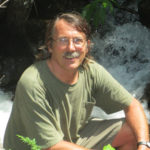TEC Series: Three People to Know in Home Performance and Weatherization
Over the years, TEC has been fortunate to meet hundreds of home performance and weatherization professionals whose daily focus is to help homeowners and building managers create comfortable spaces.
In this new series, we’ll introduce you to three professionals to know in these fields.
 Dick Kornbluth, Principal at DickKornbluth, LLC
Dick Kornbluth, Principal at DickKornbluth, LLC
40 years experience
Dick chose this career path because he had a desire to work in a service industry that provided clear benefits to homeowners and contributed to the environment. As principal at DickKornbluth, LLC, he leads consultation for the home performance industry, drawing on decades of experience as a residential retrofit insulation contractor and home performance contractor. He loves it because “the benefits of the service I provide are permanent and often contributed to the health and well-being of my customers.” Over time, the industry has changed. According to Dick, there is more recognition of the complexity of the house system and it has even started to penetrate related industries, such as HVAC. In his opinion, one of the biggest challenges facing the industry today is messaging. “There is no inherent demand for whole-house services, and it is a difficult concept to communicate via mass media.”
 Martin Holladay, Senior Editor at Green Building Advisor
Martin Holladay, Senior Editor at Green Building Advisor
44 years experience
Martin chose to switch careers and become an editor because the work is less physically demanding than construction. For the sustainable building website Green Building Advisor, he covers a number of topics in addition to writing the Musings of an Energy Nerd column. He loves writing about building science because he enjoys sharing his enthusiasm for building science with builders and designers. According to Martin, a number of big industry changes have occurred over the past decade. “Residential construction and journalism are two industries that have both been rocked by change during the last 10 years. It’s been a roller-coaster ride for both industries.” In Martin’s opinion, the biggest challenges right now are construction quality and how journalists disseminate information. “Residential construction faces a crisis of quality, and builders are faced with the urgent need to understand air sealing methods and blower door test protocols in light of new code requirements for airtightness. Journalists face the challenges of (a) the collapse of the newspaper and magazine industries, (b) the rise of web-based ‘content providers,’ and (c) readers who expect all information to be free. It’s enough to keep journalists on their toes, for sure.”
 Terry Brennan, President at Camroden Associates, Inc.
Terry Brennan, President at Camroden Associates, Inc.
40 years experience
Many factors played into Terry following this career path. “The combination of a degree in physics, experience as a carpenter and mason, the oil embargoes of the 1970s, and the desire to avoid working at an institution lead me to a partnership with a mechanical engineer who had retired from Aberdeen Proving Grounds (because he didn’t like working for an institution) to make residential buildings more energy efficient. We did a lot of mockup experiments on materials and assemblies, and a lot of analysis on late mini (PDP) and early micro (TRS80, Godbout) microcomputers. We built a blower door in 1979, and that lead to problems and more mysteries to solve. There was no turning back after that.” Terry loves the people, the puzzles and the mysteries in the industry, which he interacts with every day as president of the building science consulting firm Camroden Associates. In Terry’s experience, the industry has changed quite a bit over time.
- Materials and methods for air sealing, insulating, controlling moisture, ventilation, heating and cooling, window performance, and health and safety have vastly improved.
- Equipment and methods for diagnosing building-related problems and performing QA on design and installation have greatly improved.
- Building science (a term unknown in the US until it emigrated from Canada and Sweden) knowledge has spread throughout residential construction in the US.
- Even the commercial and institutional building sectors have adopted the knowledge developed in the ‘80s and ‘90s by residential contractors.
- The largest of buildings can now be blower door tested using new equipment that links test fans and manometers together to collect and analyze the data.
- Well hell! It’s institutional now! I’m moving to Florida to sell snow cones, oops, gelato.
In terms of challenges the industry faces, Terry feels the biggest challenge is institutionalization: “Keeping the simple principles simple in practice in the face of institutionalization and too many programs, labels and standards.”
